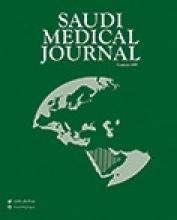
The book shares local and global perspectives to address the common concerns related to care of late preterm infants (LPI) and their families, and to foster a partnership in promoting their health all across the globe. It is intended to any health care providers such as nurses, midwives, physicians and other allied care professionals like health visitors, community health workers. This book consists of eleven chapters. The first chapter focuses on accurate defining of late preterm and the associated problems while the second chapter focuses on causes, of preterm, the role of preterm induction of labor and specifies the importance of considering mothers’ psychological health before admission. The 3rd chapter deals with maternal emotional health before and after birth matters, examines why emotional health during pregnancy matters. This chapter concluded that stress, anxiety, and depression are the most common conditions that women face during pregnancy and postpartum. In chapter 4, the author explore how fathers respond to the birth of their LPI, adjust to parenthood, and interact with their LPI by undertaking a critical and narrative review of all available literature examining fathers of LPIs. The fifth chapter highlights the clinical experiences of the authors regarding the second and third level of care for the LPI. Chapter 6 sheds light on the magnitude of the most common reasons the LPI readmitted to hospital, namely, hyperbilirubinemia, infection, and respiratory distress. Pattern of readmission are detailed where evidence is available and best practices for discharge planning are also detailed. Chapter 7 is concerned with the breast feeding of LPI with special focus on the challenges associated with this issue moreover; the care for parents specific to the comfort level of the family to instill parental confidence in infant care. In chapter 8, the authors discuss supplementation as it applies to the needs of the late preterm infant. An awareness of the unique characteristics of LPI will help families be realistic in their feeding experience after hospital discharge.
Chapter 9 focuses on the high susceptibility of LPIs for morbidity in terms of neurodevelopmental outcomes than infants born at term and high lightened that early intervention is required at various points during postpartum, infancy, and the early childhood years. The tenth chapter brings narratives stories from Brazil, Japan, Malawi, Russia, and South Africa.
In the 11th chapter, the authors attempted to share the growing body of evidence that provide insight into the characteristics of these infants that threaten their adaptation outside the uterus (example, womb), present as challenges to health-care providers and parents, and impact growth and neurodevelopmental outcomes of LPIs.
I enjoyed reading this book. Its audience would be nursing students, nurses, neonates’ agencies, palliative care programs, all settings, and all clinicians caring for the neonates.
- Copyright: © Saudi Medical Journal
This is an open-access article distributed under the terms of the Creative Commons Attribution-Noncommercial-Share Alike 3.0 Unported, which permits unrestricted use, distribution, and reproduction in any medium, provided the original work is properly cited.






